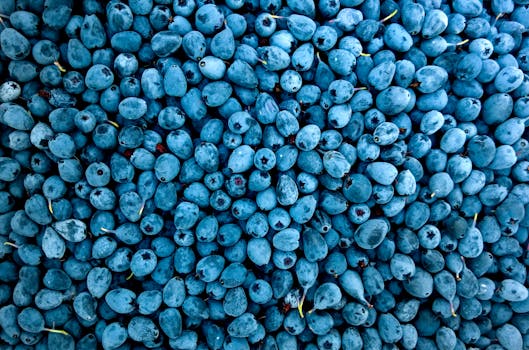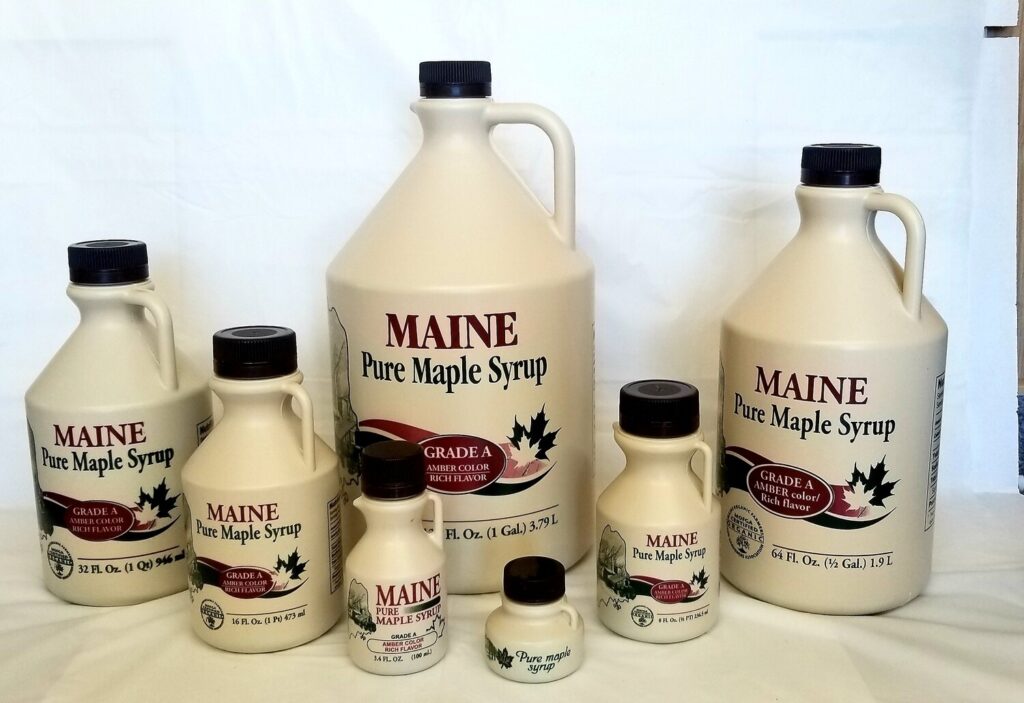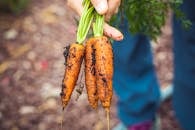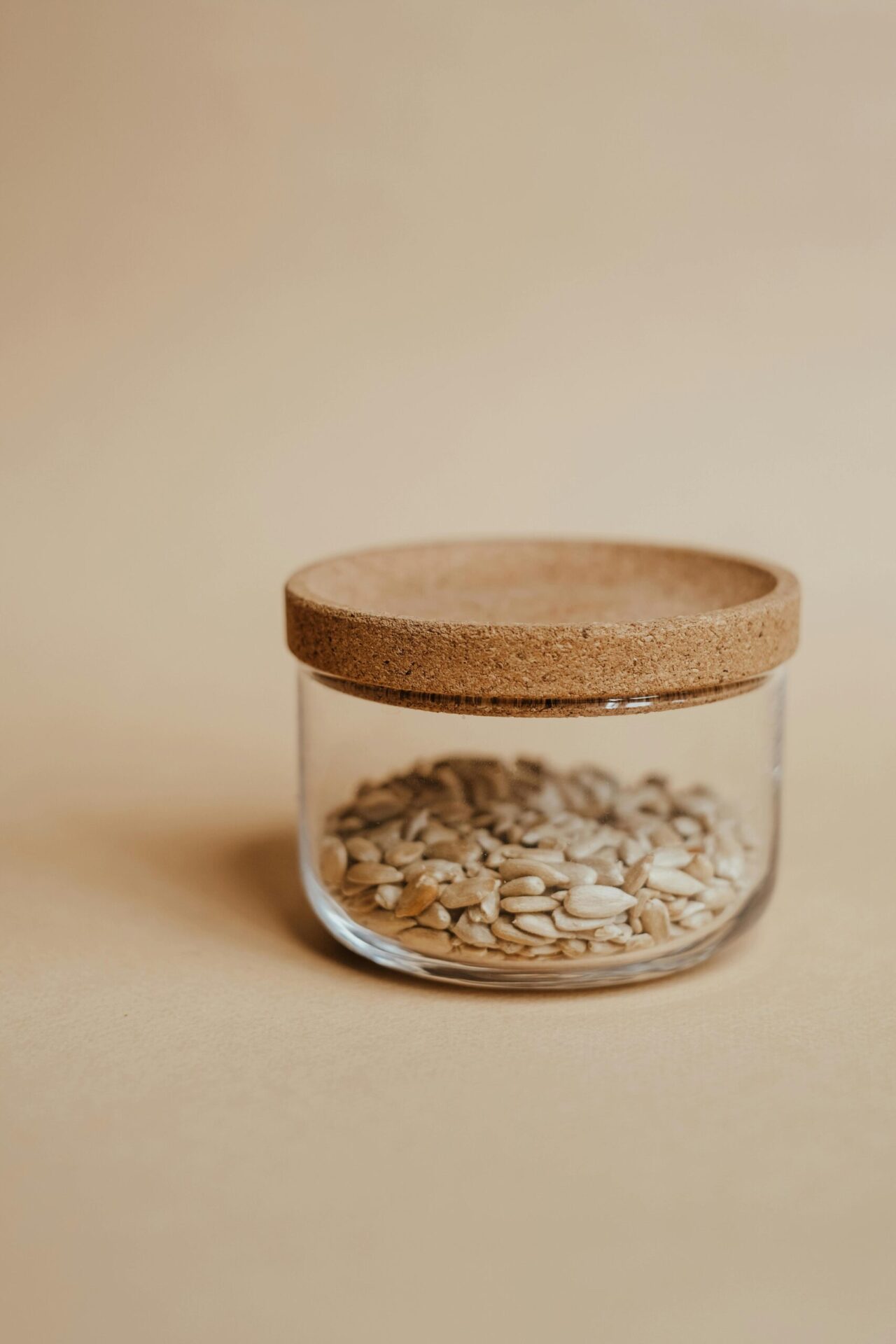Your cart is currently empty!
Category: Health

Climate Change
What Causes Climate Change?
In simple terms, climate change is caused by an increase in greenhouse gases in Earth’s atmosphere. These gases, like carbon dioxide (CO₂) and methane (CH₄), trap heat from the sun, leading to a “greenhouse effect” that warms the planet. Human activities, such as burning fossil fuels (like coal, oil, and natural gas), deforestation, and industrial processes, release large amounts of these gases. This results in changes in weather patterns, rising sea levels, and other environmental impacts.
So, to put it simply, the main cause of climate change is our activities that increase greenhouse gases. 🌎🔥
How does climate change affect farmers?
Small farms face significant challenges due to climate change. Here are a few ways they are affected:
- Extreme Weather: Increased frequency and severity of storms, floods, droughts, and heatwaves can damage crops and livestock, leading to reduced yields and financial losses.
- Pests and Diseases: Warmer temperatures and changing precipitation patterns can create favorable conditions for pests and diseases that harm crops and animals. This can increase the need for pesticides and veterinary care, raising costs for farmers.
- Water Availability: Changes in rainfall patterns can lead to water shortages or excesses, making it difficult for farmers to irrigate their crops effectively. Water scarcity can be particularly challenging for small farms with limited resources.
- Soil Degradation: Increased temperatures and changes in rainfall can affect soil health, leading to erosion, nutrient depletion, and reduced fertility. This can make it harder for small farmers to maintain productive land.
- Economic Pressures: Climate change can lead to market fluctuations and increased production costs. Small farms, with less financial cushion, can struggle to cope with these economic pressures compared to larger agricultural enterprises.
Adapting to these challenges often requires investment in new technologies, infrastructure, and practices, which can be difficult for small farms with limited resources. It’s a tough battle, but innovation and support from communities and governments can make a big difference.
What can small farmers do to combat climate change?
Small farmers can take several proactive steps to combat climate change and make their farms more sustainable:
- Adopt Sustainable Farming Practices:
- Crop Rotation: Planting different crops in succession to improve soil health and reduce pests and diseases.
- Cover Cropping: Growing cover crops (like clover or rye) to protect and enrich the soil, preventing erosion and improving soil fertility.
- Organic Farming: Reducing or eliminating the use of synthetic pesticides and fertilizers, which can contribute to greenhouse gas emissions.
- Implement Water Conservation Techniques:
- Drip Irrigation: Using drip systems to deliver water directly to the roots of plants, minimizing water waste.
- Rainwater Harvesting: Collecting and storing rainwater for irrigation purposes during dry periods.
- Enhance Soil Health:
- Composting: Using organic waste to create compost that enriches the soil and reduces the need for chemical fertilizers.
- Reduced Tillage: Minimizing soil disturbance to maintain soil structure, reduce erosion, and increase carbon sequestration.
- Integrate Agroforestry:
- Planting Trees and Shrubs: Integrating trees and shrubs into farmland to provide shade, reduce wind erosion, and capture carbon dioxide.
- Utilize Renewable Energy:
- Solar and Wind Power: Installing solar panels or wind turbines to generate clean energy for farm operations, reducing reliance on fossil fuels.
- Promote Biodiversity:
- Diversified Cropping Systems: Growing a variety of crops to promote ecosystem resilience and reduce vulnerability to climate-related stressors.
- Engage in Community and Knowledge Sharing:
- Cooperatives and Networks: Joining or forming cooperatives and networks to share knowledge, resources, and best practices for sustainable farming.
By adopting these practices, small farmers can contribute to mitigating climate change, improving their farm’s resilience, and promoting environmental sustainability. 🌾🌿
REMEMBER TO SHOP LOCAL
Some interesting articles:
1.) A belowground perspective on the nexus between biodiversity change, climate change, and human well‐being
2.) Japan releases 200,000 tonnes of emergency rice stockpile as prices soar .
Local

LOCAL
Local
LOCAL
LOCAL
We do the “usual” farm things like canning, freezing and drying produce in one form or another but in today’s environment it’s almost impossible to be totally self-reliant. Going to the local grocery is almost unavoidable so when you have a chance to purchase your food from a fellow farmer it can be very rewarding.
Recently I was introduced to a farmer in Parkman that grows some 600 acres of organic grains and produce. An amount almost unimaginable by me.
The beauty is that I was able to use his whole grain flour to produce the bread we eat. Replacing flour from various far away sources with unknown handling practices with locally grown, organic flour produced by hardworking farmers who take personal pride in their craft.So, I thought what other benefits are there to buying local?
- Freshness: Locally grown produce often travels shorter distances to reach your plate, meaning it’s usually fresher and more flavorful.
- Nutritional Value: Fresh produce tends to retain more nutrients. Plus, local farmers may prioritize sustainable practices over maximizing shelf life.
- Supporting Local Economies: When you buy from local farmers and producers, you help boost the local economy and support small businesses in your community.
- Environmental Impact: Local food often has a smaller carbon footprint since it doesn’t need to be transported long distances. This can reduce greenhouse gas emissions and lower overall energy consumption.
- Seasonal Eating: Eating locally encourages you to consume foods that are in season, which can lead to a more varied and balanced diet.
- Connection to Food Sources: Knowing where your food comes from helps you build a deeper connection to what you eat and fosters a greater appreciation for farming practices.
- Community Building: Farmers’ markets and local food events create opportunities for community engagement and help build stronger social ties.
So, next time you’re at the market, you might find that buying local is not just a tasty choice, but a feel-good one, too! 🌱🍅
The flour I speak of can be purchased from the Rusted Rooster Farm


Pita Bread
Homemade Pita BreadEquipment
- 1 Large Bowl
- 1 Pizza Stone
Ingredients
- 1 Cup Warm Water
- 2 tsp Active Dry Yeast
- 1 tsp Granulated Sugar
- 3 1/2 cups All Purpose Flour we used local Turkey Red Flour
- 1 tbsp Extra Virgin Olive Oil
- 1 1/2 tsp Kosher Salt
Instructions
- In a large bowl, combine warm water, yeast and sugar and stir until dissolved. Stir in1/2 cup of flour and let sit for 15 minutes, until mixture foams.
- Add oil, salt and 2 1/2 cups flour, (reserving 1/2 cup) and stir with a wooden spoon until shaggy mass forms. Dust a clean surface with some of the reserved flour and knead until smooth and elastic, about 7 minutes. Adding more of the reserved flour if the dough is too sticky. Dough should be soft and moist.
- Place dough in a clean large bowl and cover with plastic wrap. Leave in a warm place until dough has doubled in size, about 1 hour.
- Place pizza stone or large cas-iron skillet in your oven and preheat to 500f. Lightly dust a clean surface with flour. Punch down dough and turn it out onto surface. Divide dough into 8 pieces and roll into balls. Cover with a towel or plastic wrap and let rest for 10 minutes.
- Working one at a time, roll each round into a 1/4" thick circle about 6" wide, sprinkle dough with flour if starts to stick.
- Working quickly as possible, open your oven and place as many pitas that will fit on your skillet or stone without touching. Let bake until air pocket ballon and the pita begin to turn golden brown, 3 to 5 minutes. Repeat with remaining rounds.
- Cover baked pitas with a clean kitchen towel to keep warm.

Oatmeal Molasses Bread
Baking your own oatmeal molasses bread is a delightful and rewarding experience, offering several benefits:
- Control Over Ingredients: You can choose high-quality, organic ingredients, avoid preservatives, and adjust the recipe to suit dietary preferences or restrictions.
- Freshness: There’s nothing quite like the taste and aroma of freshly baked bread. Home-baked bread is free from the additives and preservatives found in store-bought versions.
- Nutritional Value: Homemade bread can be more nutritious. Oatmeal is rich in fiber and essential nutrients, while molasses adds iron, calcium, and magnesium.
- Customization: You can experiment with different flours, add nuts, seeds, or dried fruits, and adjust the sweetness or texture to your liking.
- Cost-Effective: Baking at home can be more economical in the long run, especially if you bake regularly.
- Therapeutic Activity: Baking can be a relaxing and enjoyable activity, offering a sense of accomplishment and creativity.
And hey, it’s a wonderful way to fill your home with the comforting, inviting scent of freshly baked bread.

Oatmeal Molasses Bread
Simple oatmeal and molasses bread.Equipment
- 2 Large Bowls one for mixing and one for letting the dough rise in
- 2 Loaf Pans 2 large loaf pans(13X5) or 3 smaller ones (9X5)
Ingredients
- 4 Cups Water Boil
- 2 Cups Quick or cut oats
- 3/4 tsp Cinnamin opt
- 1/4 Cup Sugar
- 3 tbsp coconut oil Can substitute
- 3 tsp Salt
- 1 Tbsp Flax Seed
- 1 Cup Molasses Can cut with maple syrup if using less sugar
- 8-9 Cups Bread Flour Organic non-bleached
- 2 1/8 tsp dry yeast
Instructions
- Add oats, cinnamon, sugar, oil, salt, flax seed, molasses and or maple syrup in a large bowl.
- Bring 4 cups of water to a full boil and add to dry ingredients. Mix well.
- Allow mixture to cool to 109-115, (no higher) before adding yeast.
- After yeast is well mixed in, add flour and kneed for 5 to 10 minutes creating a soft ball. Put dough in large slightly oiled bowl and allow to rise for 90 minutes.Keep warm 98-105F or place in bread proofer. Dough should almost double in size.
- After 90 minutes, take dough out of the proofer and spread out on a board roughly the length of the pans. Split in two halves, (or thirds) and place into pans lined with parchment paper.
- Place bread pans in a warm place and once again allow it to rise. 60 minutes.
- After the bread has risen, put a small amount of whole oats on the top of the loaves and gently press in.
- Preheat oven to 350 degrees, once up to temperature bake for 46 minutes or until the center of the loaf is 200F.
- Take bread out of the pans and place on a wire rack and allow to cool.
- ~ENJOY~

Maple Syrup
100% locally sourced and harvested maple syrup. Tasty dark
$12.00 – $22.00
Roxiva Light Therapy
Taking care of our bodies should include taking care of our minds and emotional wellness as well.
The RX1 lamp uses audio-visual entrainment (AVE), where synchronized light and sound rhythms stimulate the brain, promoting creativity, introspection, and moments of clarity. It’s designed to help users achieve benefits similar to those of long-term meditation or psychedelic experiences, but in a safe, controlled, and drug-free manner

By incorporating Roxiva light therapy into your health routine, you can create a holistic approach to well-being that addresses both mental and physical aspects.
Roxiva light therapy offers a range of potential benefits, including:
- Pain Management: By reducing inflammation and promoting circulation, Roxiva light therapy can help alleviate pain and discomfort.
- Muscle Recovery: Athletes and fitness enthusiasts often use this therapy to speed up muscle recovery and reduce post-exercise soreness.
- Skin Health: It is believed to support collagen production and improve skin tone and texture.
- Stress Reduction: The immersive light and sound experience can help induce a state of deep relaxation, reducing stress and anxiety.
- Improved Sleep: The therapy can promote better sleep by helping users achieve a more relaxed state before bedtime.
- Enhanced Focus and Clarity: By guiding the brain into states of heightened awareness, Roxiva light therapy can improve focus and mental clarity.
- Emotional Balance: The therapy can help users achieve emotional balance and resilience, similar to the effects of long-term meditation.
These benefits make Roxiva light therapy a versatile tool for enhancing overall well-being and personal development.
Roxiva light therapy is generally considered safe for most people. However, there are a few important considerations to keep in mind:
- Safety Questionnaire: Before starting a session, users are required to complete a safety/informed consent questionnaire. This helps identify any potential risks, such as sensitivity to strobing or flickering light, which could trigger seizures in rare cases.
- Facilitator Supervision: Sessions are typically supervised by trained facilitators who ensure your safety and comfort throughout the experience.
- Adjustable Intensity: The light intensity can be adjusted to suit individual comfort levels, and users can cover their eyes or move away from the light if it feels too intense.
- Hydration and Rest: It’s recommended to arrive hydrated and well-rested to get the most out of the experience.
Note: This post is for educational purposes only and not intended as medical advice. Trademarks are acknowledged and respected.

Why Heirloom Seeds Are Important
why are heritage seeds important?

Heritage seeds, also known as heirloom seeds, play a crucial role in preserving agricultural biodiversity and cultural heritage. Here are some key reasons why they are important:
- Genetic Diversity: Heritage seeds maintain a wide range of genetic traits, which can help crops resist diseases, pests, and adverse environmental conditions. This diversity is essential for the resilience of our food supply.
- Cultural Heritage: These seeds are often passed down through generations, preserving traditional varieties that have historical and cultural significance. Growing heritage crops helps maintain the connection to our agricultural past.
- Flavor and Nutrition: Heirloom varieties are often prized for their superior flavor, texture, and nutritional value compared to many modern hybrids. They offer unique and diverse tastes that are often lost in commercially grown produce.
- Sustainability: Heritage seeds are typically open-pollinated, meaning they can be saved and replanted year after year. This practice promotes sustainable farming and reduces the dependence on commercial seed companies.
- Environmental Benefits: Many heirloom varieties are well-adapted to local growing conditions, requiring fewer chemical inputs like pesticides and fertilizers. This can lead to more environmentally friendly farming practices.
Preserving and growing heritage seeds is a meaningful way to support biodiversity, sustainability, and cultural heritage in our food systems. 🌱
Non-GMO Verses GMO
Growing non-GMO (non-genetically modified organism) plants is a great choice for many reasons. Here are a few benefits:
- Natural Selection: Non-GMO plants are naturally bred, which means they maintain the genetic diversity that is crucial for resilience against diseases and environmental changes.
- Health and Safety: Some people prefer non-GMO products because they want to avoid the potential health risks associated with genetically modified foods. While there is ongoing debate about the safety of GMOs, choosing non-GMO can be a way to minimize exposure to anything you’re unsure about.
- Environmental Impact: Non-GMO farming often involves more sustainable practices. Many GMO crops are engineered to withstand certain herbicides, which can lead to increased herbicide use and potential environmental harm.
- Biodiversity Preservation: By growing non-GMO plants, you’re helping to preserve the genetic heritage of crops. This is essential for maintaining a wide variety of plants that can adapt to different growing conditions and climates.
If you’re looking to start a non-GMO garden, make sure to look for seeds labeled as “non-GMO” or “heirloom.” These will ensure that you’re growing plants that haven’t been genetically modified. Happy gardening! 🌼🌽
Where to Find Non-GMO Seeds
Here are some reputable websites that specialize in non-GMO, organic, and heirloom seeds:
- Seed Savers Exchange: A non-profit organization dedicated to preserving heirloom seeds. They offer a wide variety of non-GMO seeds and have a strong focus on heritage varieties.
- Johnny’s Selected Seeds: Known for their organic seeds and plants, Johnny’s has been farming organically since 1979 and is a signer of the Safe Seed Pledge.
- Baker Creek Heirloom Seeds: They offer a large selection of heirloom seeds and are committed to non-GMO seed production.
- Botanical Interests: This company provides a variety of organic, non-GMO seeds and plants, including heirloom varieties.
- Peaceful Valley Farm & Garden Supply: They offer a range of organic and non-GMO seeds and gardening supplies.
These companies are committed to sustainable and socially responsible practices, ensuring you get high-quality, non-GMO seeds for your garden. Happy planting! 🌱











